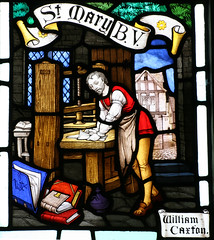
Image: Ludgershall, Buckinghamshire by Martin Beek
Although I wholeheartedly endorse moving towards digital only newsletters and more ephemeral works, I always take pause when considering digital-only publication for scholarly works.
University of Michigan has decided to move toward digital-only publishing with the capability of print-on-demand. The move appears to be partially financial according to the U-M Press Blog, and Phil Pochoda (Dir. of U-M Press) makes some compelling points regarding how digital broadens access. What he does not address is the continuous cost of digital archives.
I hope for the sake of retaining knowledge, the university also has a plan in place to archive physical copies.
Tip off: LISNews





3 comments:
... or at least archive the digital copy. The rise in digital scholarship will require us to continue thinking of ways to preserve borne-digital items.
Very true. But I hesitate to suggest digital archives. There are a whole slew of problems including but not limited to file formats, hardware to access, continuity, and curation.
When I think of digital archives, a big, red, mental flag pops up called the Domesday Project.
That's not to say that archival-quality paper and inks are always the easiest or best way to go. But when I think back to when I saw several examples of illuminated manuscripts at the Getty, I can't imagine that we could currently do that with digital.
John Taormina commented this in FB yesterday: "This is a really hot topic among university presses right now. You were right to point out the ongoing cost of digital archiving. There should also be thought given to separating the costs of the various components of publishing: authorship, design, distribution, archiving, marketing, etc. since some will continue. It's not all about saving paper and printing costs. And then there are the copyright issues..."
Post a Comment